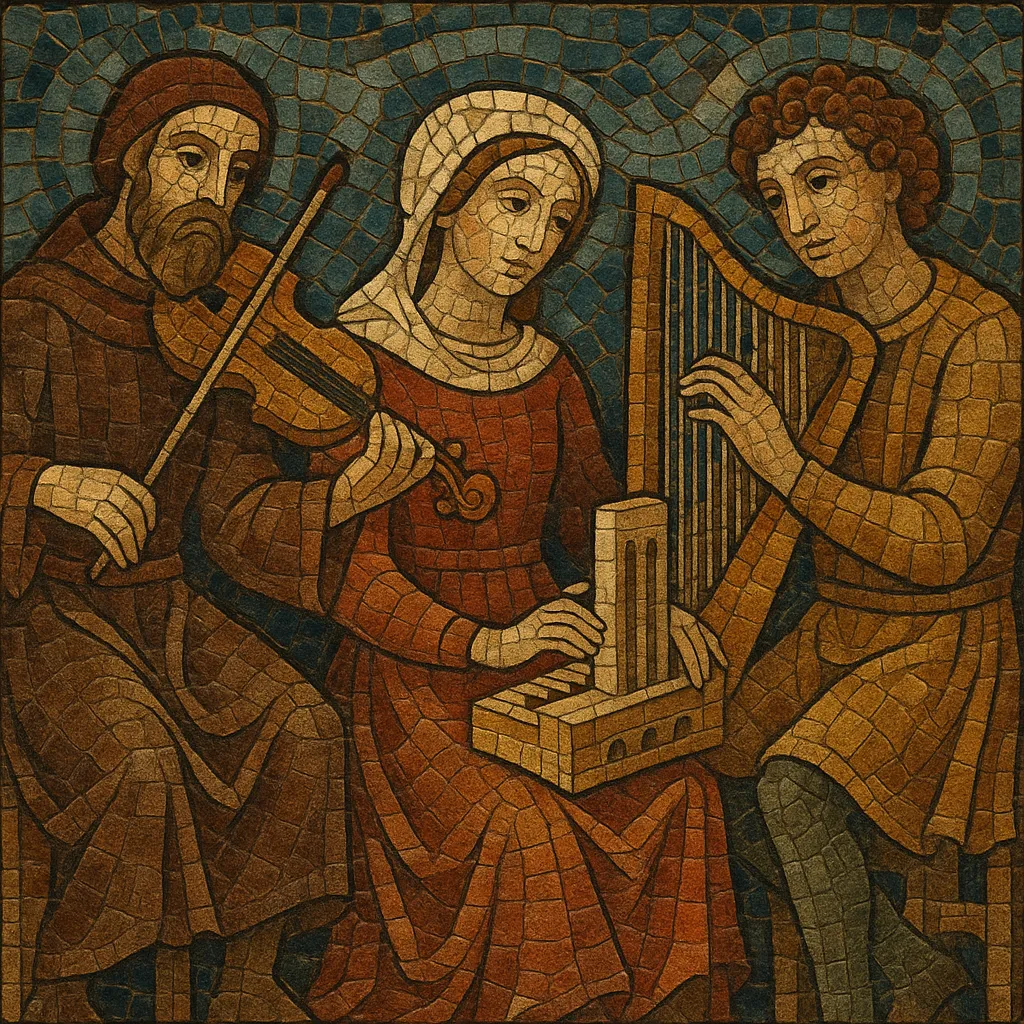Medieval music refers to the diverse sacred and secular musical practices of Europe between the fall of the Western Roman Empire and the dawn of the Renaissance. It spans more than eight centuries, from early monophonic chant to the first notated polyphony.
Core features include the use of church modes rather than major/minor, extensive reliance on vocal music (Latin sacred chant as well as vernacular song), and the progressive development from unmeasured chant to rhythmic modal notation and, later, mensural notation. Texture evolves from monophony (plainchant, troubadour songs) to organum, conductus, and the motet, culminating in complex isorhythmic works by the late 13th–14th centuries.
Secular traditions—troubadours and trouvères in France, Minnesänger in German lands, and the Iberian Cantigas—coexisted with and influenced sacred practice. Instruments such as the vielle, harp, psaltery, recorder, shawm, hurdy-gurdy, and portative organ often doubled or accompanied voices, though much music remained purely vocal.
Early medieval music grew out of Late Antique and regional Christian chant traditions. These included Roman, Gallican, Ambrosian, Mozarabic, Beneventan, and Byzantine practices. Standardization under the Carolingians encouraged the consolidation of Roman and Frankish chant into what became known as Gregorian chant, notated with neumes to preserve sacred repertory.
Experimentation with parallel and free organum introduced multi-voice textures to liturgical music. The Notre Dame school in Paris (with Léonin and Pérotin) established rhythmic modes and large-scale polyphonic settings (organum, conductus, early motets), codified in more precise notation that allowed coordinated, measured rhythm.
The Ars Antiqua period refined modal rhythm and motet composition. In the early 1300s, theorists and composers such as Philippe de Vitry advanced the Ars Nova, introducing mensural notation (duple and triple divisions) and isorhythmic structures. Guillaume de Machaut synthesized these techniques in monumental motets and in the earliest complete polyphonic Mass Ordinary by a single composer.
Concurrently, secular monophonic song flourished: troubadours and trouvères (Occitan and Old French), Minnesänger (Middle High German), and the Iberian Cantigas (patronage of Alfonso X). Later Italian Trecento composers (e.g., Landini) cultivated sophisticated ballate and related forms, while dance types like the estampie circulated widely.
Medieval music established the foundations of Western notation, modal theory, polyphonic technique, and large-scale sacred forms. These developments directly informed Renaissance counterpoint and, through it, the entire subsequent Western classical tradition (Baroque, Classical, Romantic, and beyond).
-
•
Choose mode and text; draft a chant-like melody.
•If polyphonic, derive a tenor (cantus firmus) from chant, then add upper voices using contrary/oblique motion, perfect consonances at structural points.
•Apply rhythmic modes or mensural patterns appropriate to style (Ars Antiqua vs. Ars Nova).
•Orchestrate with discreet period instruments, maintaining vocal primacy and modal color.


